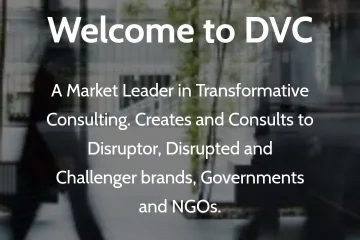The ease with which governments can instigate robust digital transformation policies and track and incorporate disruptive technologies depends on various factors, and it is often a complex and ongoing process. Here are key considerations:
1. Leadership and Governance:
– Effective leadership and governance are essential for driving digital transformation initiatives. Governments need leaders who understand the importance of technology, can articulate a clear vision, and navigate bureaucratic challenges to implement necessary policies.
2. Policy Framework:
– Developing a comprehensive policy framework is critical. Governments must establish guidelines for digital transformation, addressing issues such as data governance, cybersecurity, privacy, and technology standards. A well-defined policy framework provides a roadmap for implementation.
3. Collaboration and Partnerships:
– Collaboration with the private sector, academia, and technology experts is crucial. Governments can leverage external expertise, foster innovation ecosystems, and build partnerships to stay informed about disruptive technologies and benefit from external perspectives.
4. Resource Allocation:
– Adequate resources, both financial and human, are required. Governments need to allocate budgets for technology investments, workforce training, and the development and implementation of digital policies.
5. Digital Literacy and Workforce Training:
– Enhancing digital literacy across government agencies and the broader workforce is essential. Training programs ensure that employees understand and can effectively leverage new technologies, fostering a culture of innovation.
6. Regulatory Flexibility:
– Governments should maintain regulatory flexibility to adapt to emerging technologies. Rigidity in regulations may hinder the adoption of disruptive technologies. Regular assessments and updates to regulations are necessary to accommodate technological advancements.
7. Data Infrastructure and Interoperability:
– Robust data infrastructure is foundational. Governments need systems that can handle large volumes of data securely. Interoperability between different government systems is crucial for seamless data exchange and collaboration across departments.
8. Public-Private Collaboration:
– Engaging with the private sector is key. Governments can benefit from industry expertise, access to new technologies, and innovative solutions through public-private partnerships. Collaboration facilitates the incorporation of disruptive technologies into public services.
9. Continuous Monitoring and Evaluation:
– Establishing mechanisms for continuous monitoring and evaluation is vital. Governments should regularly assess the impact of digital transformation policies, track technological trends, and evaluate the effectiveness of implemented initiatives.
10. Political Will and Public Support:
– Political will and public support are fundamental. Governments need the support of policymakers and the public to implement bold digital transformation initiatives. Effective communication about the benefits and outcomes is crucial for garnering public support.
While these considerations highlight the importance of various factors, it’s important to note that the ease of implementation varies based on the specific context, political landscape, and existing infrastructure of each government. Flexibility, adaptability, and a commitment to ongoing improvement are key elements for successful implementation and sustained progress.
Why is it imperative for governments to have robust digital transformation policies and rigourous tracking of disruptive technologies?
Let’s look at this in detail.
1. Enhanced Public Services:
– Robust digital transformation policies enable governments to modernize public services, offering citizens efficient and accessible interactions. Digital platforms for service delivery, such as online portals and mobile applications, streamline processes, reduce bureaucracy, and enhance the overall citizen experience.
2. Increased Efficiency and Cost Savings:
– Digital technologies automate routine tasks, reducing the time and resources required for administrative processes. This efficiency contributes to cost savings in government operations, allowing resources to be reallocated to more strategic initiatives.
3. Global Competitiveness:
– Governments that actively track and invest in disruptive technologies position themselves as leaders in innovation. This leadership enhances the country’s global competitiveness, attracting foreign investment, fostering economic growth, and contributing to the development of a knowledge-based economy.
4. Economic Growth and Job Creation:
– Digital transformation policies create an environment conducive to innovation and entrepreneurship. Encouraging the adoption of emerging technologies can lead to the development of new industries and the generation of job opportunities in areas like technology, research, and development.
5. Data Security and Privacy:
– As governments increasingly rely on digital platforms to deliver services, ensuring the security and privacy of citizens’ data becomes paramount. Robust policies establish guidelines for secure data management, encryption, and protection against cyber threats, fostering trust in government systems.
6. Responsive Governance:
– Real-time data analytics and tracking of disruptive technologies enable governments to respond promptly to emerging challenges. This responsiveness is particularly crucial during crises, allowing for informed decision-making and effective crisis management strategies.
7. Innovation Ecosystem:
– Governments play a pivotal role in fostering an innovation ecosystem. By actively tracking disruptive technologies and collaborating with the private sector, academia, and research institutions, governments can create an environment where ideas flourish, leading to breakthrough innovations and advancements
8. Digital Inclusion:
– Digital transformation policies should focus on reducing the digital divide, ensuring that all segments of society have access to digital services. Initiatives such as digital literacy programs, affordable internet access, and inclusive technology design contribute to digital inclusion.
9. Regulatory Frameworks for Emerging Technologies:
– Tracking disruptive technologies allows governments to proactively develop regulatory frameworks. These frameworks balance the promotion of innovation with the need for ethical and responsible use. They address issues such as data protection, algorithmic transparency, and ethical considerations in the deployment of emerging technologies.
10. Crisis Management and Resilience:
– Digital transformation enhances a government’s ability to manage crises effectively. Real-time data analytics, predictive modeling, and communication platforms contribute to a resilient system capable of responding swiftly to emergencies, ensuring the safety and well-being of citizens.
In essence, each of these aspects reflects the multifaceted impact of robust digital transformation policies and active tracking of disruptive technologies on governance, economic development, and societal well-being. These initiatives are essential for navigating the complexities of the digital age and positioning governments as responsive, innovative, and inclusive entities
We at DVC Consultants, have created a digital transformation framework, to enable this crucial process. We call it LOAF Gen AI 24.
The integration of the L.O.A.F GenAI 24 process, combining Leadership and Organization in Anarchic Flux with Generative AI capabilities, is of paramount importance for governments in the context of digital transformation policies and tracking disruptive technologies. Here’s an in-depth explanation of its significance:
1. Scenario Planning and Simulation:
– The use of Generative AI for scenario planning enables governments to anticipate potential disruptions from emerging technologies. This foresight is critical for strategic planning, risk mitigation, and effective policy formulation, ensuring governments are prepared for various future scenarios.
2. Technology Roadmap Enhancement:
– Generative AI contributes to the creation and optimization of technology roadmaps. By analyzing extensive datasets, it identifies innovative combinations of technologies, ensuring that the roadmap remains accurate, adaptable, and aligned with evolving market needs. This is crucial for governments aiming to stay at the forefront of technological advancements.
3. Innovation and Ideation Support:
– Generative AI serves as a catalyst for innovation, providing novel ideas and solutions based on existing data. For governments, fostering a culture of continuous innovation is essential to address complex challenges and seize opportunities, contributing to societal progress and competitiveness on the global stage.
4. Dynamic Strategy Refinement:
– Post-implementation, Generative AI continually analyzes real-time data, customer feedback, and market shifts. This iterative feedback loop enables governments to refine policies and strategies dynamically, ensuring they remain agile, responsive, and capable of adapting to evolving conditions.
5. Risk Mitigation and Compliance:
– Generative AI assists in identifying potential risks associated with disruptive technologies and ensures compliance with evolving regulations. Governments can proactively address compliance issues, thereby mitigating risks and safeguarding against unforeseen challenges, including legal and ethical considerations.
6. Customer Experience Enhancement:
– Leveraging Generative AI to understand citizen preferences enhances public services. The AI analyzes vast amounts of citizen data, providing insights to personalize government offerings, improve user experiences, and meet evolving expectations amidst disruptive technologies. This contributes to increased citizen satisfaction and trust.
Orchestration Platform Features:
– The orchestration platform acts as a collaborative hub, facilitating the integration of Generative AI into governmental decision-making processes.
– Workflow Mapping ensures a structured approach aligned with L.O.A.F. GenAI 24 principles.
– Use Case Integration targets specific applications of Generative AI into governmental functions.
– Data Integration provides seamless access to real-time information from various sources, enhancing the accuracy of decision-making.
– Generative AI Tools support scenario analyses and dynamic strategy adjustments.
– Iterative Feedback Loop enables continuous refinement based on ongoing data analysis.
– Risk Management and Compliance Module assists in navigating legal landscapes and recommending compliance strategies.
– User Interface (UI) ensures an intuitive design for stakeholder navigation and decision-making.
– Automation and Notifications streamline tasks and provide timely alerts for critical developments.
– Scalability and Flexibility accommodate future expansions or modifications.
– Security Measures include robust access controls and encryption to protect sensitive government data.
– Documentation and Training resources are provided for effective platform utilization.
In summary, the integration of the L.O.A.F GenAI 24 process, supported by Generative AI and an advanced orchestration platform, empowers governments to navigate the challenges of digital transformation. It enhances strategic planning, decision-making, and policy formulation, positioning governments as adaptive, innovative, and responsive entities in the rapidly changing technological landscape. This not only benefits government operations but also contributes to the well-being and satisfaction of citizens.




0 Comments